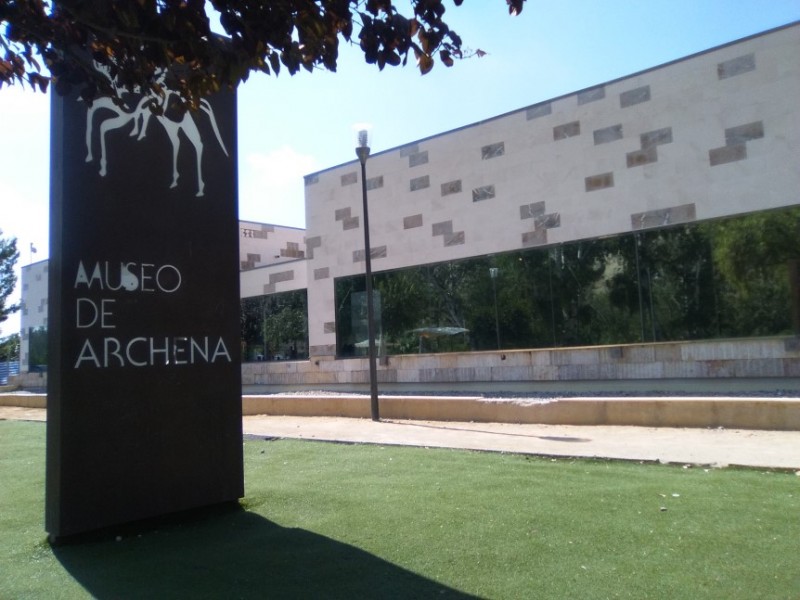- Region
- Águilas
- Alhama de Murcia
- Jumilla
- Lorca
- Los Alcázares
- Mazarrón
- San Javier
-
ALL AREAS & TOWNS
- AREAS
- SOUTH WEST
- MAR MENOR
- MURCIA CITY & CENTRAL
- NORTH & NORTH WEST
- TOWNS
- Abanilla
- Abarán
- Aguilas
- Alamillo
- Alcantarilla
- Aledo
- Alhama de Murcia
- Archena
- Balsicas
- Blanca
- Bolnuevo
- Bullas
- Cañadas del Romero
- Cabo de Palos
- Calasparra
- Camping Bolnuevo
- Campo De Ricote
- Camposol
- Canada De La Lena
- Caravaca de la Cruz
- Cartagena
- Cehegin
- Ceuti
- Cieza
- Condado de Alhama
- Corvera
- Costa Cálida
- Cuevas De Almanzora
- Cuevas de Reyllo
- El Carmoli
- El Mojon
- El Molino (Puerto Lumbreras)
- El Pareton / Cantareros
- El Raso
- El Valle Golf Resort
- Fortuna
- Fuente Alamo
- Hacienda del Alamo Golf Resort
- Hacienda Riquelme Golf Resort
- Isla Plana
- Islas Menores & Mar de Cristal
- Jumilla
- La Azohia
- La Charca
- La Manga Club
- La Manga del Mar Menor
- La Pinilla
- La Puebla
- La Torre
- La Torre Golf Resort
- La Unión
- Las Palas
- Las Ramblas
- Las Ramblas Golf
- Las Torres de Cotillas
- Leiva
- Librilla
- Lo Pagan
- Lo Santiago
- Lorca
- Lorquí
- Los Alcázares
- Los Balcones
- Los Belones
- Los Canovas
- Los Nietos
- Los Perez (Tallante)
- Los Urrutias
- Los Ventorrillos
- Mar De Cristal
- Mar Menor
- Mar Menor Golf Resort
- Mazarrón
- Mazarrón Country Club
- Molina de Segura
- Moratalla
- Mula
- Murcia City
- Murcia Property
- Pareton
- Peraleja Golf Resort
- Perin
- Pilar de la Horadada
- Pinar de Campoverde
- Pinoso
- Playa Honda
- Playa Honda / Playa Paraíso
- Pliego
- Portmán
- Pozo Estrecho
- Puerto de Mazarrón
- Puerto Lumbreras
- Puntas De Calnegre
- Region of Murcia
- Ricote
- Roda
- Roldan
- Roldan and Lo Ferro
- San Javier
- San Pedro del Pinatar
- Santiago de la Ribera
- Sierra Espuña
- Sucina
- Tallante
- Terrazas de la Torre Golf Resort
- Torre Pacheco
- Totana
- What's On Weekly Bulletin
- Yecla


- EDITIONS:
 Spanish News Today
Spanish News Today
 Alicante Today
Alicante Today
 Andalucia Today
Andalucia Today
The Museo de Archena, the local museum of Archena
The exhibits trace the history of the Archena from prehistoric times to the 20th century
The Museo de Archena is likely to be one of the first ports of call for visitors to the town and the municipality, due not only to the displays it contains but also to the fact the building doubles up as home to the local tourist information office.
The museum is housed in a modern building consisting of four interconnected exhibition rooms, and is located in one of the most attractive areas of Archena, alongside the leafy vegetation on the banks of the River Segura and with impressive views across to the mountain of Cabezo del Tío Pio, which is home to arguably the most important archaeological site in the area. Many of the items exhibited inside relate to this site and to prehistory in Archena and the surrounding area, and much of the first part of the museum is devoted to this topic.
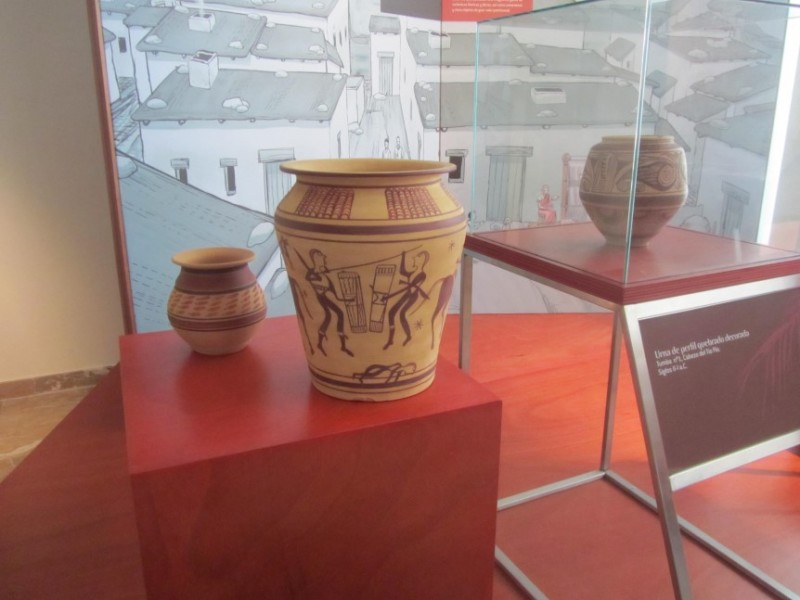
One of the most eye-catching exhibits is a replica of the “Vaso de los Guerreros” (or Warrior Vase), which is now housed in the national archaeology museum in Madrid, an example of the style of Iberian art which developed through prolonged contact with the Greek culture during the first millennium BC. So distinctive is the decorative style found in this part of Spain that it has been given its own name of “Elche-Archena”, and the urn is a vessel measuring 41 centimetres in height and 36 cm in diameter, decorated with scenes depicting hunting and armed combat between fighters on horseback and foot warriors, interrupted by a boar-hunting tableau. The original dates from the second half of the 3rd century BC.
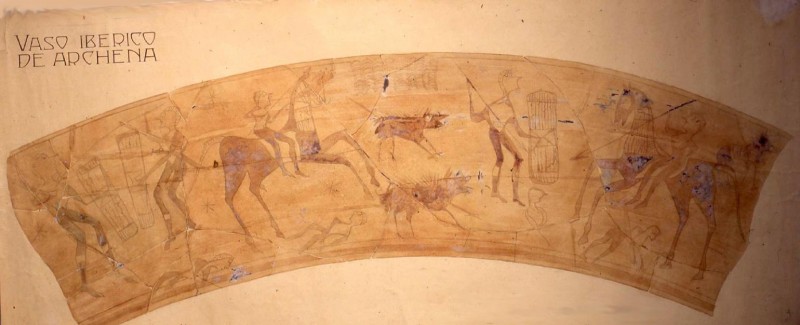
Going even further back, there are also explanations of the geology of Archena – some of the surface rocks are 250 million years old! – and of the qualities which make the water of the thermal springs in the Balneario so effective in treating various ailments.
The exhibits also trace the history of Archena through the periods of Roman rule (between 200 BC and around 400 AD) and under the Moors (8th to 13th centuries AD), and then through the Middle Ages and the centuries under the control of the religious and military Order of San Juan (see the history of Archena for further details).
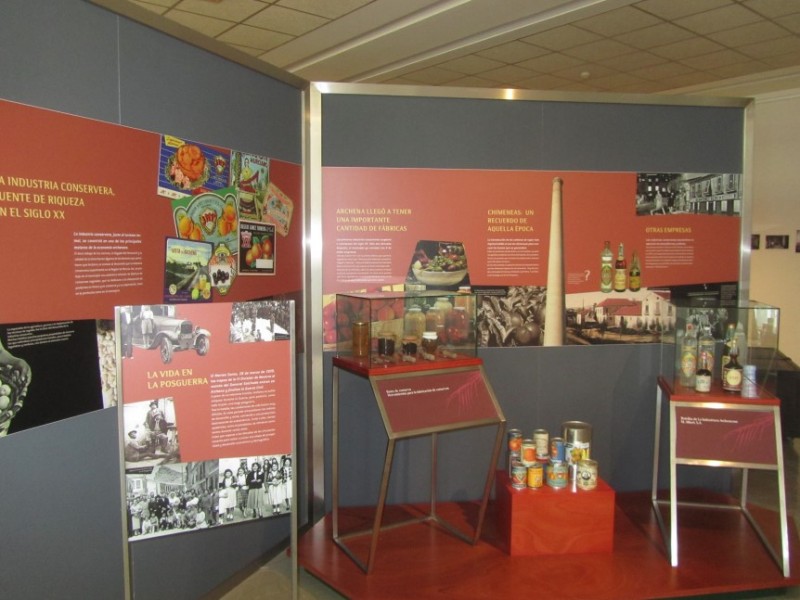
The story moves on to the growth of Archena’s population and economy in the 19th century, when the arrival of the railway was a key factor in making the Balneario the most popular spa resort in Spain, as well as contributing to the emergence of the fruit canning sector as a source of prosperity in this part of Murcia.
In the last section of the display many of the exhibits are concerned with two of Archena’s most illustrious sons, poet and dramatist Vicente Medina and his cousin Inocencio Vera, a well-known painter and illustrator in the late 19th and early 20th centuries. The final room is reserved for temporary exhibitions and other cultural events.
This is a small museum, and a visit of half an hour is probably long enough for most people, but it is well laid out and tourist office staff are extremely well informed and able to add to the information contained on boards throughout the visit. Unfortunately this information is not in English, but give them a little patience and the staff are able to transmit some of their knowledge!
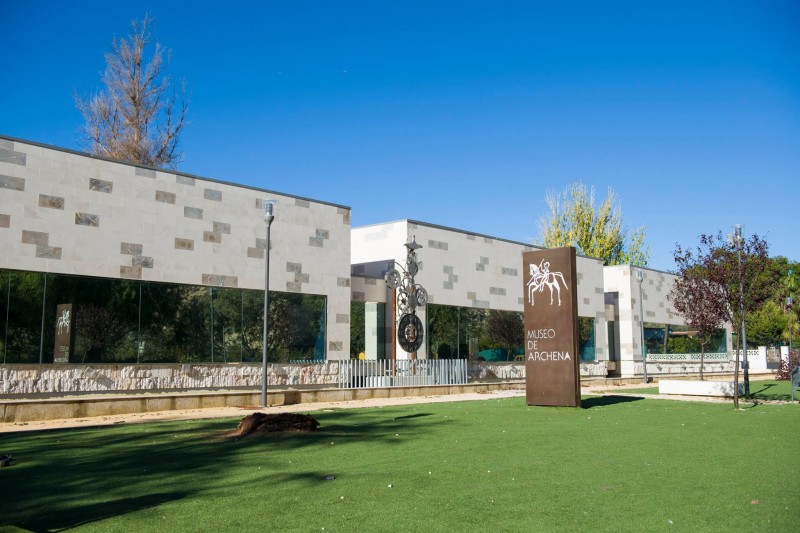
How to get to the Museo de Archena and the Archena tourist office
Most visitors to Archena will approach along the A-30 motorway, and should take the exit signposted at kilometre 121 before following the N-301 and the RM-554 to the edge of the town.
After passing an industrial estate on the left in the outskirts of Archena, take the right fork at a roundabout (signposted “centro urbano”), then head right again at the next roundabout, just after a petrol station. This road leads to another roundabout and a bridge over the River Segura: cross and head right once more on the Avenida del Río Segura. The museum and tourist office are on the right after a little over 100 metres.
Click here for further information about the Archena municipality

